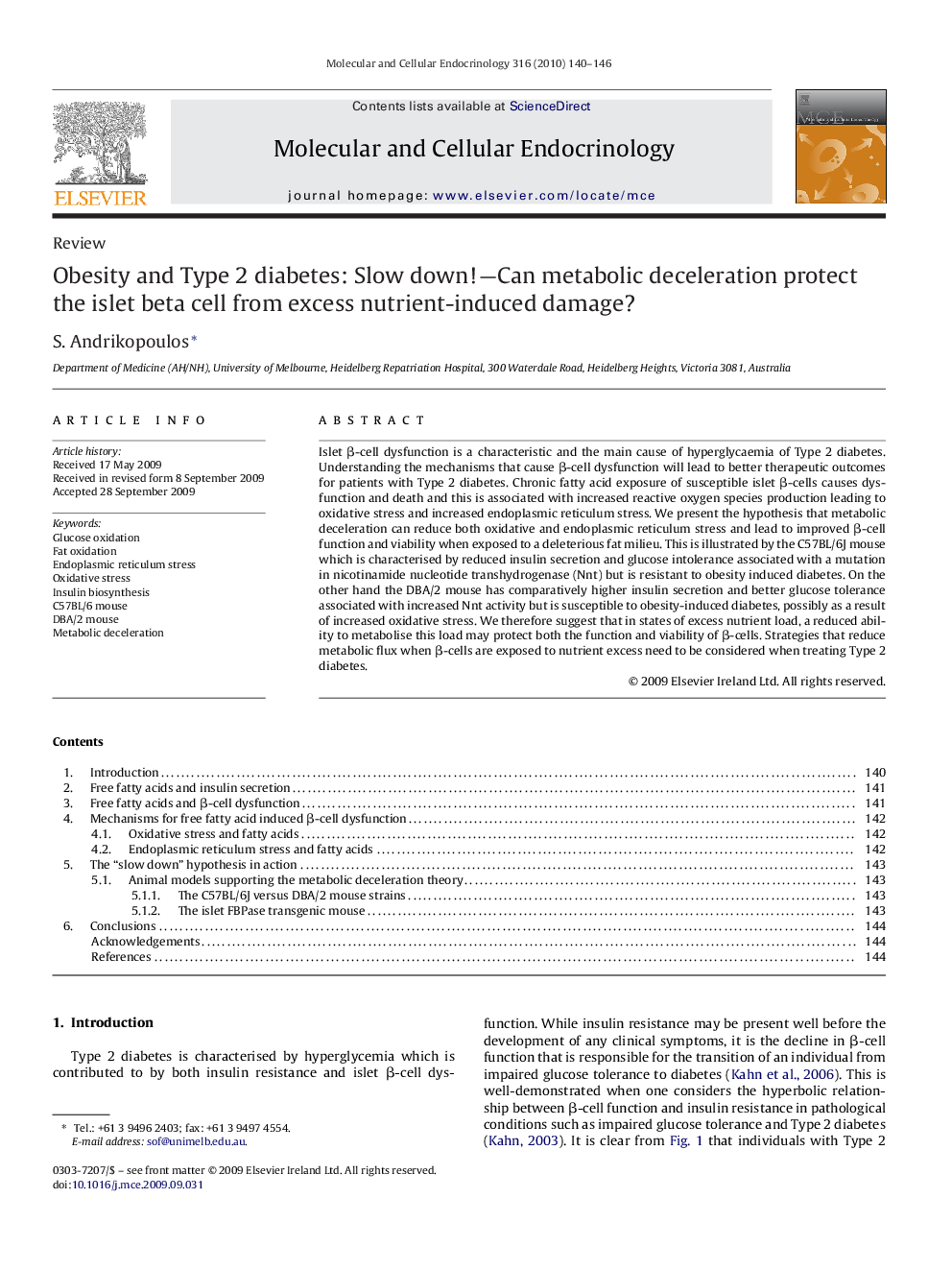| Article ID | Journal | Published Year | Pages | File Type |
|---|---|---|---|---|
| 2197077 | Molecular and Cellular Endocrinology | 2010 | 7 Pages |
Islet β-cell dysfunction is a characteristic and the main cause of hyperglycaemia of Type 2 diabetes. Understanding the mechanisms that cause β-cell dysfunction will lead to better therapeutic outcomes for patients with Type 2 diabetes. Chronic fatty acid exposure of susceptible islet β-cells causes dysfunction and death and this is associated with increased reactive oxygen species production leading to oxidative stress and increased endoplasmic reticulum stress. We present the hypothesis that metabolic deceleration can reduce both oxidative and endoplasmic reticulum stress and lead to improved β-cell function and viability when exposed to a deleterious fat milieu. This is illustrated by the C57BL/6J mouse which is characterised by reduced insulin secretion and glucose intolerance associated with a mutation in nicotinamide nucleotide transhydrogenase (Nnt) but is resistant to obesity induced diabetes. On the other hand the DBA/2 mouse has comparatively higher insulin secretion and better glucose tolerance associated with increased Nnt activity but is susceptible to obesity-induced diabetes, possibly as a result of increased oxidative stress. We therefore suggest that in states of excess nutrient load, a reduced ability to metabolise this load may protect both the function and viability of β-cells. Strategies that reduce metabolic flux when β-cells are exposed to nutrient excess need to be considered when treating Type 2 diabetes.
